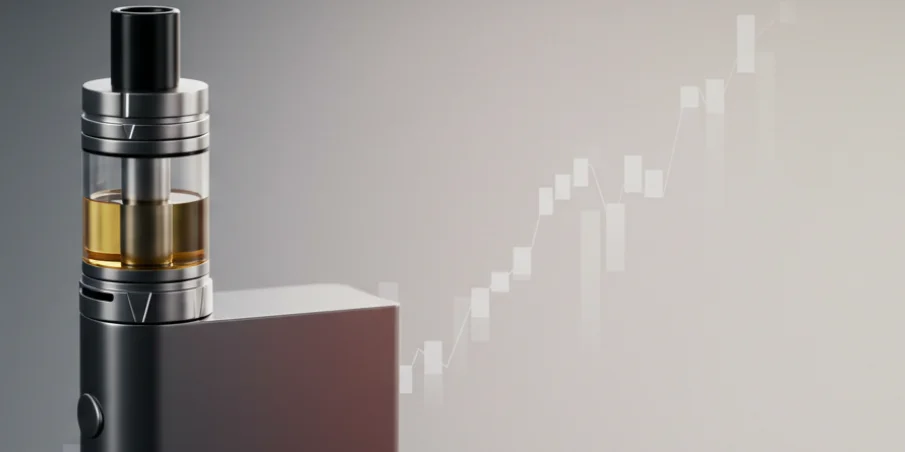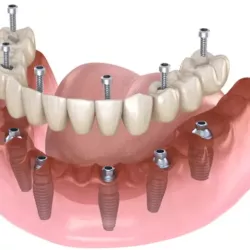Taxation and Public Health: The Debate Around Vaping Product Pricing
Vaping has become a hot topic in the United States, with millions of people puffing on e-cigarettes as an alternative to traditional smoking. But there’s a big debate brewing about how taxing these products affects both our wallets and our health. Why does taxation and public health matter when it comes to vaping product pricing? Well, it’s not just about slapping a price tag on a vape pen—it’s about whether these taxes help or hurt people trying to quit smoking, or if they push kids toward dangerous habits. Let’s dive into this complex issue, unpack the arguments, and see what’s really at stake.
Why Taxes on Vaping Products Are a Big Deal
Taxes on vaping products, often called e-cigarette or vape taxes, are extra charges added to the cost of things like vape pens, e-liquids, and related accessories that are available in vape shops. These aren’t your typical sales taxes; they’re special excise taxes, kind of like the ones on cigarettes or alcohol, designed to do more than just raise money for the government. The idea is to influence behavior—either to discourage people from vaping or to fund public health programs. But here’s the catch: not everyone agrees on what these taxes actually achieve.
Imagine you’re at a convenience store, eyeing a sleek new vape device. It’s already pricey, but then you notice the tax jacked up the cost by a few bucks. That extra cost might make you think twice, right? That’s exactly what policymakers are banking on, especially when it comes to younger people. But the debate around taxation and public health gets murky because vaping isn’t just a habit—it’s often pitched as a less harmful option for smokers trying to quit. So, are these taxes helping us live healthier lives, or are they making it harder for people to ditch cigarettes?
The Public Health Angle
Public health advocates argue that taxing vaping products is a smart move to keep kids and teens from getting hooked on nicotine. Vaping has exploded in popularity among young people, with fruity flavors like mango and bubblegum making e-cigarettes seem more like candy than a nicotine delivery system. Studies show that higher prices can discourage teens from buying vapes, since they’re often strapped for cash. It’s like when you were a kid and couldn’t afford that extra candy bar—price matters.
But it’s not just about kids. These taxes are also meant to fund programs that tackle smoking-related illnesses, like lung cancer or heart disease. The money from vape taxes often goes to state health departments, which use it for things like anti-smoking campaigns or hospital programs. Sounds great, right? Who wouldn’t want to fund better healthcare? Well, the problem is that vaping isn’t the same as smoking, and lumping them together under heavy taxes might not be as straightforward as it seems.
The Harm Reduction Perspective
Here’s where things get interesting. Many experts say vaping is a lot less harmful than smoking traditional cigarettes—some even claim it’s up to 95% safer. Unlike cigarettes, vapes don’t burn tobacco, which means they produce fewer of the nasty chemicals that cause cancer. For adults who’ve been smoking for years, switching to vaping can be a game-changer, like choosing a salad over a burger. It’s not perfect, but it’s better.
So, if vaping helps people quit smoking, why tax it so heavily? Critics of high vape taxes argue that jacking up prices makes it harder for smokers to switch to a less harmful option. Picture a pack-a-day smoker who’s ready to try vaping but sees the price of e-liquids skyrocket because of taxes. They might just stick with cigarettes instead, which is worse for their health. This is where the taxation and public health debate gets heated: are we accidentally pushing people back to smoking by making vaping too expensive?
How Vaping Taxes Work in the U.S.

Let’s break down how these taxes actually work. In the U.S., vaping taxes vary wildly from state to state, and there’s no federal tax on e-cigarettes (yet). Some states tax vapes based on the volume of e-liquid (like a dollar per milliliter), while others slap a percentage on the wholesale price. For example, Minnesota has a hefty 95% tax on the wholesale price of vaping products, which can make a $20 vape cartridge cost way more. Other states, like Delaware, keep it lighter with a tax of just a few cents per milliliter.
This patchwork system creates a weird situation. If you live in a state with high vape taxes, you might drive across the border to buy your e-liquids somewhere cheaper. Or worse, you might turn to the black market, where products aren’t regulated and could be downright dangerous. Remember those scary news stories about lung injuries from vaping a few years back? A lot of those were linked to sketchy, unregulated products. So, when we talk about taxation and public health, we’ve got to consider whether high taxes are pushing people toward risky alternatives.
Who’s Paying the Price?
Taxes on vaping products don’t hit everyone the same way. For starters, they tend to affect lower-income folks the most, since they’re more sensitive to price hikes. If you’re scraping by, an extra $5 on a vape might mean you skip it altogether—or, worse, go back to cheaper cigarettes. This raises a big question: are vape taxes fair? If the goal is public health, shouldn’t we be making it easier for people to choose less harmful options, not harder?
Young people are another group in the crosshairs. Teens and young adults are more likely to vape than older folks, and studies show that higher prices can curb their use. But there’s a flip side: some young people might switch to cigarettes if vapes get too pricey, which is the last thing anyone wants. It’s like trying to fix one problem and accidentally creating another.
The Big Debate: Balancing Health and Access
The heart of the taxation and public health debate around vaping product pricing is finding a balance. On one hand, we want to keep vapes out of kids’ hands and fund programs that make our communities healthier. On the other, we don’t want to punish adults who are using vaping to quit smoking. So, how do we thread that needle?
The Case for High Taxes
Supporters of high vape taxes say it’s all about prevention. Nicotine is addictive, and the last thing we need is a new generation hooked on it. By making vapes more expensive, states can discourage kids from starting in the first place. Plus, the extra revenue from these taxes can do a lot of good—like paying for school programs that teach kids about the risks of nicotine or helping hospitals treat smoking-related diseases.
There’s also the argument that vaping isn’t risk-free. While it’s safer than smoking, we don’t know all the long-term effects yet. Some studies suggest vaping might cause lung irritation or heart issues down the line. So, taxing vapes could be a way to hedge our bets, encouraging people to cut back or quit altogether. It’s like putting a speed bump on a road—you’re not banning driving, but you’re slowing things down to keep everyone safer.
The Case for Lower Taxes
On the other side, people argue that high taxes on vaping products are a mistake. If vaping is a tool for harm reduction, making it too expensive could backfire. Think about it: if you’re a smoker trying to quit, and the vape you want costs as much as a carton of cigarettes, what’s the incentive to switch? Critics say lower taxes would make vaping more accessible for adults who need it, while still allowing states to regulate sales to keep kids out of the equation.
There’s also the issue of black-market vapes. When taxes push prices too high, people start looking for cheaper options, and that’s where things get dicey. Unregulated vapes can contain harmful additives or faulty batteries, putting users at risk. By keeping taxes reasonable, states might actually encourage people to buy from legit retailers, where products are safer and better regulated.
The Substitution Effect
One of the trickiest parts of this debate is something called the substitution effect. Basically, when you make one product (like vapes) more expensive, people might switch to another (like cigarettes). Studies have shown this happens with vaping taxes—when e-cigarette prices go up, some people, especially younger ones, start smoking cigarettes instead. That’s a public health nightmare, since cigarettes are way more harmful.
This substitution effect is why some experts argue for a tiered tax system, where cigarettes are taxed more heavily than vapes. The idea is to make vaping the cheaper, more attractive option for smokers trying to quit, while still discouraging kids from picking up either habit. It’s a delicate balance, and not every state is getting it right.
Real-World Impacts of Vaping Taxes
Let’s zoom out and look at what’s happening in the real world. In states with high vape taxes, like Minnesota, researchers have found that fewer young people are vaping, which is a win for public health. But they’ve also seen an uptick in cigarette smoking among adults, which is a big red flag. In places with lower taxes, like Virginia, vaping remains more affordable, and some studies suggest more smokers are making the switch.
Then there’s the issue of enforcement. Taxes only work if people are actually paying them, but the vaping market is kind of a Wild West. A huge chunk of vapes sold in the U.S.—some say up to 98%—are illicit, meaning they’re not taxed or regulated at all. These products, often smuggled from overseas, undercut legal vapes and make it hard for states to control the market. So, even if a state has a solid tax plan, it might not matter if most vapes are sold under the table.
Stories from the Ground
To make this real, think about someone like Sarah, a 40-year-old mom who’s been smoking since her 20s. She wants to quit for her kids, and her doctor suggests vaping as a stepping stone. But in her state, a bottle of e-liquid costs $30 with taxes, while a pack of cigarettes is $10. Sarah’s on a tight budget, so she sticks with cigarettes, even though she knows they’re worse for her. That’s the kind of tough choice people are facing because of vaping taxes.
Now imagine Jake, a 17-year-old who vapes because his friends do. When his state raises vape taxes, he can’t afford his usual e-liquid anymore. Instead of quitting, he buys a cheap, unregulated vape from a sketchy website. It’s a risky move, but for Jake, it’s about keeping up with his crew. These stories show how taxation and public health collide in ways that aren’t always black-and-white.
Finding a Middle Ground
So, where do we go from here? The taxation and public health debate around vaping product pricing isn’t going away, and there’s no perfect solution. Heavy taxes might keep vapes away from kids, but they could also make it harder for adults to quit smoking. Low taxes might help smokers switch, but they could make vaping too accessible for teens. It’s a tightrope walk, and every step matters.
One idea is to focus on smarter regulations alongside taxes. For example, states could crack down on flavored vapes, which are super popular with kids, while keeping plain tobacco or menthol options affordable for adults. Another approach is better enforcement—making sure illegal vapes don’t flood the market and undermine tax policies. Whatever the solution, it’s clear that taxation and public health need to work together, not against each other.
Wrapping It Up
The debate over vaping product pricing is a classic case of good intentions meeting tough realities. Taxes on vapes can fund health programs and discourage teen use, but they might also push smokers back to cigarettes or drive people to risky black-market products. It’s a messy problem, and the stakes are high—after all, we’re talking about people’s health and livelihoods.
As regular folks, we might not have all the answers, but we can keep asking questions. Are these taxes really making us healthier, or are they creating new problems? By staying curious and informed, we can push for policies that strike the right balance between protecting kids and helping adults make better choices. That’s the heart of the taxation and public health conversation, and it’s worth talking about.



